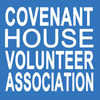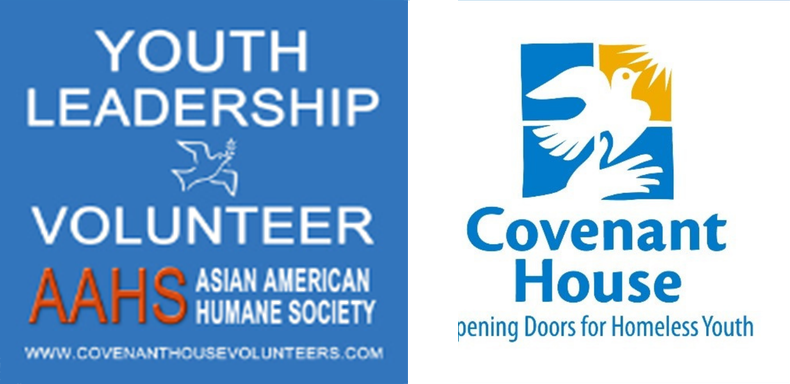|
커버넌트 하우스 홈리스 셜터 봉사 - AAHS Covenant House Volunteers Organization
The Young VictimsA federally funded study found that approximately 1.7 million children run away or are forced to leave their homes each year. While away from home, an estimated 38,600 (2.2%) of these youth were sexually assaulted, were in the company of someone known to be sexually abusive, or were engaged in sexual activity in exchange for money, food, or shelter. Runaways are perceived as easy targets for sex traffickers because they often cannot go home and have few resources. These factors expose homeless youth to criminal exploitation such as forced prostitution and sex slavery.
LGBTQ youth who have been thrown out by their families are also at especially high risk for trafficking victimization. Vulnerable youth who are looking for love and basic necessities of life including food and shelter are easy prey for human traffickers who will offer false affection, food and a place to stay the night. Their chances of being trafficked into prostitution increase every day while living on the streets with minimal resources and protection. A 2013 study by Fordham University and Covenant House New York found that close to 25% of our sampled children had either experienced sex trafficking or felt the need to trade sex for food, money or a place to stay. The truth is as simple as it is startling, the streets are a scary place for children to spend the night, and when the shelters are full, predators are ready and willing to offer a place to stay in exchange for sex exploitation. Trafficking has become a growing epidemic of domestic modern slavery and the crime rate is continuing to grow at the expense of the victims. While Covenant House remains committed to eradicating human trafficking in all its forms -- working with members of government at the local, state, and federal level, even meeting with President Barack Obama to enact swift, sweeping change against trafficking-- it seems our work is not soon done. In fact, our work will not be completed until this trafficking crime is completely abolished. There is a part for us all to play in protecting the rights of those who cannot protect themselves against modern day slavery. Over the years, Covenant House has grown to meet large challenges, and human trafficking may be the largest yet – but it is no match for the love of those who are made aware of this injustice and the many who choose to stand and fight with us for trafficking victims. Please share the information on this page and the findings of our human trafficking case studies with your loved ones, your local representatives, and those whom you believe can affect change. With your help, we can fight against sexual victimization and human trafficking. Human Trafficking in America: It’s Not Just a Foreign ProblemIn the United States, the most common form of human trafficking involves the commercial sex industry and occurs in online escort services, residential brothels, brothels disguised as massage businesses or spas, and in street prostitution. Disguised businesses make it even more difficult to spot and stop trafficking in these areas. There are two primary factors driving the spread of sex trafficking: high profits and low risk. Like drug and arms trafficking, human trafficking is a market-driven criminal industry that is based on the principles of supply and demand. Every year, traffickers generate billions of dollars in profits by the exploitation and victimization of millions of children around the world, including domestically in the United States. We’ve Seen the Damage of Exploitation First HandEvery day young trafficking victims arrive at our shelters across America. They are usually hungry, tired, scared and almost always alone, with no family or parent to call who can care for them. Some have been forced to deal drugs, beg for money on the streets or subway, or work as servants in another’s home while being denied an education. But a majority have been forced to have sex, against their will, with multiple partners so that someone else can profit off their young bodies. Many have escaped locked rooms, endured horrific violence and threatened with further violence if they ever tried to leave. But, just as many victims have been locked in by less overt force, including having nowhere else to go but the street and being traumatically bonded to a pimp who may have offered the only affection they have ever experienced in their lives. Alternating love and violence is a powerful coercion tactic used by many human traffickers to pray on the vulnerable emotions of these children. The bonds that these victims form with their sex trafficker are difficult to break and require extensive social services by dedicated and caring professionals. The violence and traumas the children face are often mistaken and taken as love and affection to these neglected victims. Human Trafficking in the United States & Human Trafficking FactsIn recent years, the plight of human trafficking victims has received a great deal of attention among legislators, social service providers and the popular press. However, as society begins to learn more about the growing problem of domestic trafficking, some questions remain, including even the most basic question: How many people are currently being victimized by human trafficking right here in the U.S.? Answering this question is not an easy task, because victims are often reluctant to come forward and seek help. This reluctance is partly because perpetrators frequently use coercion techniques convince their victims that if they attempt to seek help, no one will believe them; instead they will be thought of as criminals or prostitutes. Additionally, a lack of any central system to identify and count victims of trafficking leaves policy makers with inaccurate data making it difficult to budget and promote appropriate public policy and laws. What we do know about the Domestic Human Trafficking Industry In 2013, Covenant House New York completed a study in conjunction with Fordham University which found that an estimated 25% of surveyed NYC Covenant House residents were victims of human trafficking or had been forced to engage in survival sex (trading sex for food or shelter). According to a study conducted by LifeWay Network and Hofstra University, between 2000 and 2010 service providers in New York City interacted with more than 11,200 confirmed victims of human trafficking. The City of New York contains less than 50 dedicated beds to house survivors of human trafficking. Traffickers use the lack of youth homeless shelter beds as a way to lure young people in and force them into exploitation. They tell them that the shelters are full and coerce them by asking “where are you going to go, why don’t you come with me.” Coercion techniques commonly used include threats of physical harm to the victim or their family. With threats like these, the naive and hopeful children are soon faced with the violence of forced slavery and prostitution. In fact, coercion is so powerful that if is capable of keeping a victim enslaved without any restraints or violence. Content courtesy-covenant house NY. www.covenanthouse.org
0 Comments
Leave a Reply. |
About |
Human Rights |
|
Content Courtesy / Use with permission.
Disclaimer : All Covenant House photos and contents are owned by Covenant House.
Asian American Humane Society (AAHS) is a Covenant House Volunteer Organization
that supports the mission of Covenant House. We are active teen volunteers,
fundraisers, Free Education Resources and teen advocates for homeless and at-risk teens
All Rights Reserved. © Copyright 2023
|
Focus on Teen Human Rights, Teen Volunteer, Leadership
|


